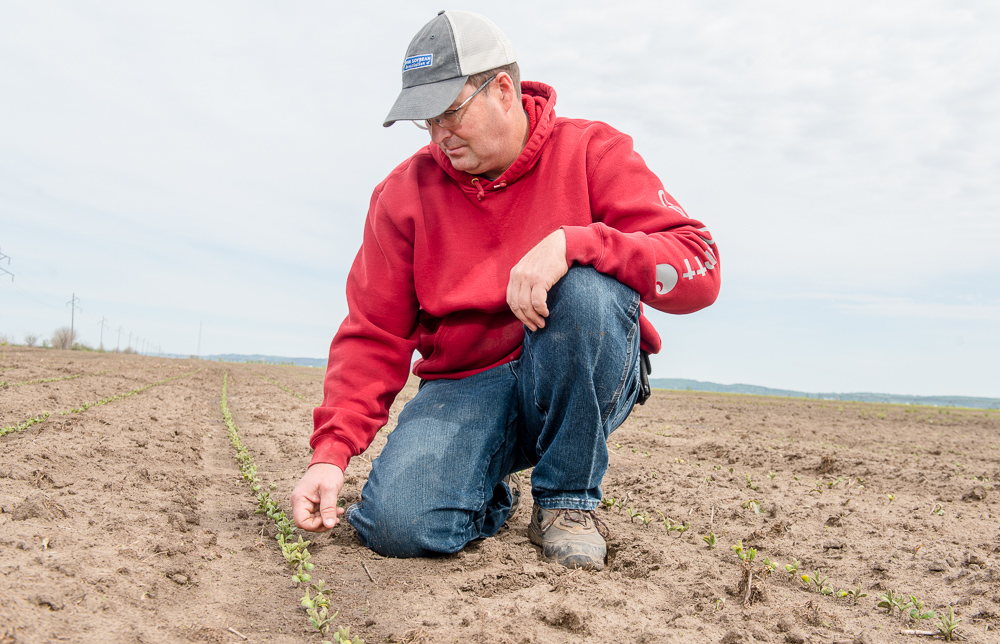
Jeff Jorgenson, Iowa Soybean Association president from Sidney, checks the progress of his soybean plants earlier this year. (Photo: Joseph L. Murphy/Iowa Soybean Association)
Soybean industry evaluating dicamba registration details
November 5, 2020 | Bethany Baratta
The Environmental Protection Agency (EPA) recently announced the approval of three dicamba formulations for over-the-top use on soybeans and cotton.
EPA Administrator Andrew Wheeler announced a 5-year registration of Xtendimax VaporGrip Xtra, Engenia and Tavium, which begins in 2021. The announcement includes restrictions on the use of the products, including a June 30 cutoff date for over-the-top use on soybeans.
Iowa Soybean Association (ISA) President Jeff Jorgenson said the registration announcement comes at an important time when farmers are making input decisions for the 2021 crop year.
“Farmers needed the announcement to happen — whichever way it was going to be — to make seed decisions for the 2021 crop year,” said Jorgenson, who farms near Sidney.
In June, the Ninth Circuit Court of Appeals announced its decision to vacate registrations on three dicamba products, XtendiMax with vapor grip technology, Engenia, and FeXapan. It took the EPA five days from the court’s June 3 vacatur decision to release guidance to farmers regarding existing dicamba stocks usage.
The threat of eliminating dicamba as a tool to fight resistant weeds forced farmers to use dicamba sooner than they would have liked, Jorgenson said.
“The window to spray was compressed as tight as it could be,” Jorgenson said, referring to the 5-day limbo. “For my operation, I sprayed sooner than I wanted, and we had some weed escaped because it rained after I sprayed, and we had more weeds.”
Jorgenson said the rushed manner by which he had to apply his existing stocks caused a 5 to 10% reduction in soybean yield.
The 5-year registration of dicamba products was welcomed, though Jorgenson wonders how he might be affected by the new restrictions regarding dicamba use.
The EPA set a calendar cutoff date of June 30 for over-the-top application on soybeans. This is a change from the 2018 setting, which allowed use until a specified crop growth stage.
“The number of days suitable for dicamba application are limited due to weather factors,” Jorgenson said.
The Oct. 27 decision also increases the downwind in-field buffer from 110 feet set in 2018 to 240 feet.
The American Soybean Association (ASA) says it is reviewing the EPA’s registration to understand its impact for U.S. soybean farmers.
“Dicamba is an important choice for growers to have available to help manage damaging weeds,” ASA said. “The product is one of many tools integral to the success of soy growers who face different crop production challenges throughout a diverse growing region spanning 30-plus states.”
Jorgenson said he’s evaluating all of his options for his 2021 crop, including his usage of dicamba products. He already incorporates cover crops into his acres as a way to suppress weeds.
“Farmers have to figure out the best options and opportunities for their farm,” Jorgenson said. “A one-size-fits-all approach doesn’t apply; it’s going to be different for everyone.”
For other changes set in the EPA’s October dicamba ruling, go here.
Back